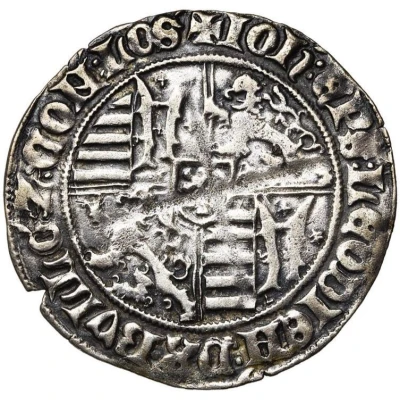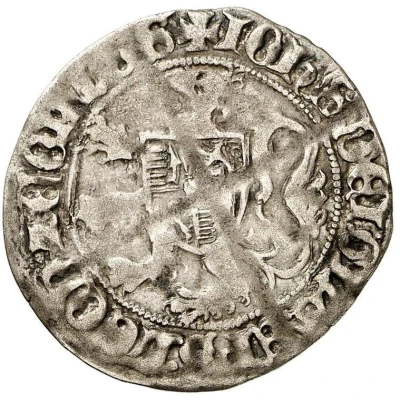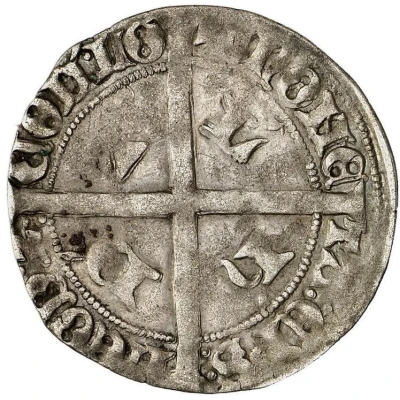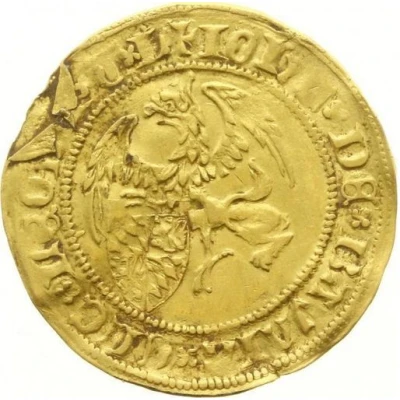


© Jean Elsen & ses Fils s.a.
2 Groats - John of Heinsberg
| Silver | 3.2 g | - |
| Issuer | Prince-bishopric of Liege (Belgian States) |
|---|---|
| Prince-bishop | John of Heinsberg (1419-1455) |
| Type | Standard circulation coin |
| Years | 1437-1438 |
| Value | 2 Groats |
| Currency | Gros (1274-1456) |
| Composition | Silver |
| Weight | 3.2 g |
| Shape | Round (irregular) |
| Technique | Hammered |
| Demonetized | Yes |
| Updated | 2024-10-04 |
| Numista | N#308308 |
|---|---|
| Rarity index | 100% |
Reverse
Long cross pattée
Script: Latin (uncial)
Lettering: ✠ANnO : DOMInI : MILLESIO : CCCCXXXVIII
Lettering (regular font): ✠ANNO : DOMINI : MILLESIO : CCCCXXXVIII
Translation: Year of Our Lord one thousand 438
Comment
Chestret 310.
Earliest dated coin of the Prince-Bishopric of Liege
Interesting fact
The 2 Groats coin from the Prince-bishopric of Liege (Belgian States) made of Silver weighing 3.2 g is interesting because it was minted during a time of great political and economic change in the region. The Prince-bishopric of Liege was a small state that existed from the 10th century to the 18th century, and during this time, it was ruled by a series of powerful bishops who played a significant role in the political and economic life of the region. The minting of this coin during the reign of John of Heinsberg in 1437-1438 suggests that the Prince-bishopric of Liege was experiencing a period of economic growth and stability, which is reflected in the use of silver as the material for the coin. Additionally, the fact that it was a standard circulation coin indicates that it was widely used in trade and commerce, highlighting the importance of the Prince-bishopric of Liege as a center of economic activity during this time.



